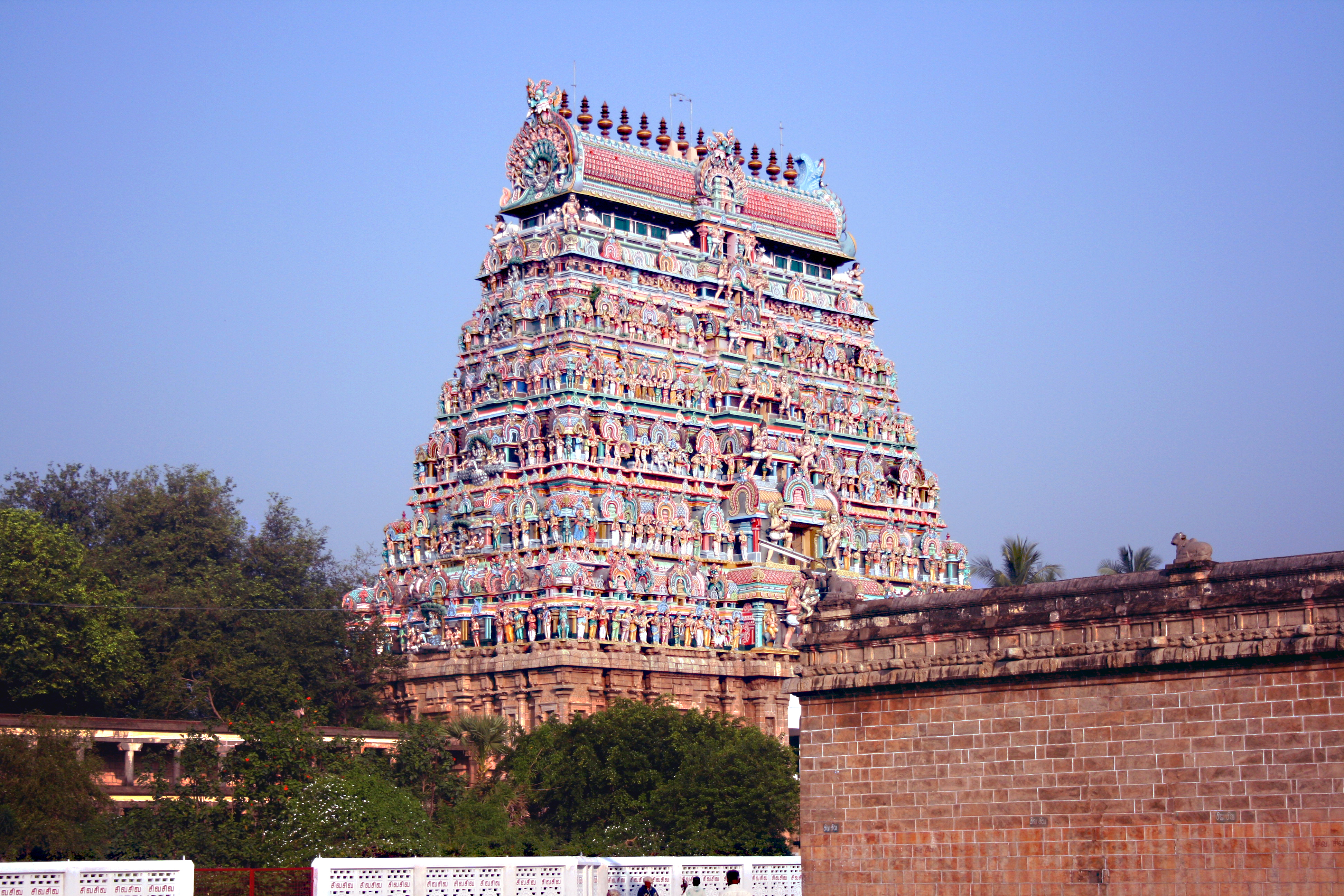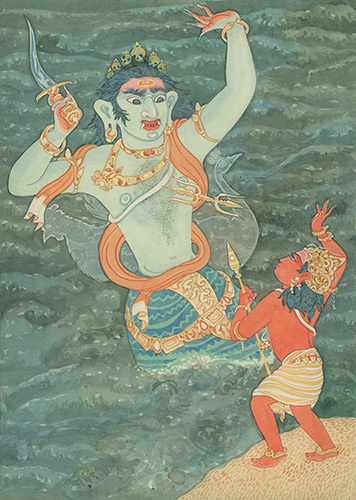|
Chidambaram Temple
Thillai Nataraja Temple, also referred as the Chidambaram Nataraja Temple, is a Hindu temple dedicated to Nataraja, the form of Shiva as the lord of dance (cosmic dancer). This temple is located in Chidambaram, Tamil Nadu, India. This temple has ancient roots and a Shiva shrine existed at the site when the town was known as Thillai. Pal 1988, p. 19 Chidambaram, the name of the city literally means "stage of consciousness". The temple architecture symbolizes the connection between the arts and spirituality, creative activity and the divine.Chidambaram Encyclopædia Britannica The temple wall carvings display all the 108 karanas from the '' Natya Shastra'' by Bharata Muni, and these postures form a foundation of |
India
India, officially the Republic of India, is a country in South Asia. It is the List of countries and dependencies by area, seventh-largest country by area; the List of countries by population (United Nations), most populous country since 2023; and, since its independence in 1947, the world's most populous democracy. Bounded by the Indian Ocean on the south, the Arabian Sea on the southwest, and the Bay of Bengal on the southeast, it shares land borders with Pakistan to the west; China, Nepal, and Bhutan to the north; and Bangladesh and Myanmar to the east. In the Indian Ocean, India is near Sri Lanka and the Maldives; its Andaman and Nicobar Islands share a maritime border with Thailand, Myanmar, and Indonesia. Modern humans arrived on the Indian subcontinent from Africa no later than 55,000 years ago., "Y-Chromosome and Mt-DNA data support the colonization of South Asia by modern humans originating in Africa. ... Coalescence dates for most non-European populations averag ... [...More Info...] [...Related Items...] OR: [Wikipedia] [Google] [Baidu] |
Vaishnavism
Vaishnavism () ), also called Vishnuism, is one of the major Hindu denominations, Hindu traditions, that considers Vishnu as the sole Para Brahman, supreme being leading all other Hindu deities, that is, ''Mahavishnu''. It is one of the major Hindu denominations along with Shaivism, Shaktism, and Smartism. Its followers are called Vaishnavites or ''Vaishnava''s (), and it includes sub-sects like Krishnaism and Ramanandi Sampradaya, Ramaism, which consider Krishna and Rama as the supreme beings respectively. According to a 2020 estimate by The World Religion Database (WRD), hosted at Boston University’s Institute on Culture, Religion and World Affairs (CURA), Vaishnavism is the largest Hindu sect, constituting about 399 million Hindus. The ancient emergence of Vaishnavism is unclear, and broadly hypothesized as a History of Hinduism, fusion of various regional non-Vedic religions with worship of Vishnu. It is considered a merger of several popular non-Vedic theistic traditio ... [...More Info...] [...Related Items...] OR: [Wikipedia] [Google] [Baidu] |
Excoecaria Agallocha
''Excoecaria agallocha'', a mangrove species, belongs to the genus ''Excoecaria'' of the family (biology), family Euphorbiaceae. The species has many common names, including blind-your-eye mangrove, blinding tree, buta buta tree, milky mangrove, poisonfish tree, and river poison tree. Most of the names refer to its toxic properties or its propensity to cause blindness when its latex comes into contact with the eyes. This plant grows in saline or brackish water in Tropics, tropical mangrove, mangrove forests, in a distribution bounded to the west by India, to the north by Bangladesh, to the south by Australia. Within Australia, it thrives from northern New South Wales along the northern coastline around to Western Australia. Description Mangrove swamps form a type of coastal wetland found in the tropics and subtropics. Within a mangrove forest, the most salt-tolerant species occur near the ocean. ''Excoecaria agallocha'', known as a back mangrove, is found at higher elevations ... [...More Info...] [...Related Items...] OR: [Wikipedia] [Google] [Baidu] |
Reddy
Reddy (also Hunterian transliteration, transliterated as Reddi or Raddi; also known as Reddiar or Reddappa) is a Telugu people, Telugu Hindu Caste system in India, caste predominantly found in the states of Andhra Pradesh and Telangana in South India. They are classified as a forward caste. The origin of the Reddy caste has been linked to the Rashtrakuta dynasty, Rashtrakutas, although opinions vary. They were feudal overlords and peasant proprietors. Historically they have been the land-owning aristocracy of the villages. Traditionally, they were a diverse community of merchants and cultivators. Their prowess as rulers and warriors is well documented in Telugu history. The Reddi dynasty (1325–1448 CE) ruled Coastal Andhra, coastal and central Andhra for over a hundred years. Today they continue to be a politically and socio-economically dominant group in the Telugu states of Telangana and Andhra Pradesh. Etymology Origin theories According to Alain Daniélou and Kenneth ... [...More Info...] [...Related Items...] OR: [Wikipedia] [Google] [Baidu] |
Maha Shivaratri
Maha Shivaratri is a Hindu festival celebrated annually to worship the deity Shiva, between February and March. According to the Hindu calendar, the festival is observed on the fourteenth day of the first half (night start with darkness - waning) of the lunar month of Phalguna. The festival commemorates the marriage of Shiva and Parvati, and the occasion of Shiva performing his ritual dance called tandava. It is a notable festival in Hinduism, marking a remembrance of "overcoming darkness and ignorance" in life and the world. It is observed by remembering Shiva and chanting prayers, fasting, and meditating on ethics and virtues such as honesty, non-injury to others, charity, forgiveness, and the discovery of Shiva. Ardent devotees stay awake throughout this night. Others visit one of the Shiva temples or go on a pilgrimage to the Jyotirlingams. The festival is believed to have originated in 5th century BCE. In Kashmir Shaivism, the festival is called Har-ratri or pho ... [...More Info...] [...Related Items...] OR: [Wikipedia] [Google] [Baidu] |
Kovil
Kovil or koyil (meaning: residence of god)The modern Tamil word for Hindu temple is ''kōvil'' () meaning "the residence of God". In ancient Tamil Nadu, the king (, ''Kō'') was considered to be a ‘representative of God on earth' and lived in a ''kōvil'', which also means "king’s house". Old words for king like ''Kō'' ( "King"), ''Iṟai'' ( "Emperor") and ''Āṇṭavan'' ( "Conqueror") are now primarily used to refer to God. is the Tamil term for a distinct style of Hindu temple with Dravidian architecture. Etymology Both the terms ''koyil'' (, ''kōyil'') and ''kovil'' (, ''kōvil'') are used interchangeably. In Tamil, ( wikt:ta:கோவில்) is the word derived, according to the rules of Tamil grammar."உடம்படுமெய்ப் புணர்ச்சி" என்ற தமிழ் இலக்கண விதிப்படி, "வ்" வரும், கோ + இல் = கோவில். உடம்படு மெய்: நில� ... [...More Info...] [...Related Items...] OR: [Wikipedia] [Google] [Baidu] |
Shaivism
Shaivism (, , ) is one of the major Hindu denominations, Hindu traditions, which worships Shiva as the Para Brahman, supreme being. It is the Hinduism#Demographics, second-largest Hindu sect after Vaishnavism, constituting about 385 million Hindus, found widely across South Asia (predominantly in South India, Southern India), Sri Lanka, and Nepal.Keay, p.xxvii. The followers of Shaivism are called Shaivas or Shaivites. According to Chakravarti, Shaivism developed as an amalgam of pre-Aryan religions and traditions, Vedic Rudra, and post-Vedic traditions, accommodating local traditions and Yoga, puja and bhakti. According to Bisschop, early shaivism is rooted in the worship of vedic deity Rudra. The earliest evidence for sectarian Rudra-Shiva worship appears with the Pasupata (early CE), possibly owing to the Origins of Hinduism, Hindu synthesis, when many local traditions were aligned with the Brahmanism, Vedic-Brahmanical fold. The Pāśupata movement rapidly expanded through ... [...More Info...] [...Related Items...] OR: [Wikipedia] [Google] [Baidu] |
Ca Ve
CA most often refers to: * Canada, a country by ISO 3166-1 alpha-2 code * California, U.S. state by postal abbreviation CA or ca may also refer to: Businesses and organizations Companies * Air China (IATA airline code CA) * CA Technologies, a U.S. software company * Cayman Airways, a Cayman Islands airline * Channel America, a defunct U.S. television network * Coal & Allied, Australian mining company * Continental Airlines, a U.S. airline * Creative Assembly, a PC game developer * Crédit Agricole, a major French bank Government and political * Bureau of Consular Affairs, a division of the U.S. Department of State * Canadian Alliance, a former Canadian political party * Centre Alliance, Australian political party formerly known as Nick Xenophon Team * Citizens' Alliance, a political party in Trinidad and Tobago * Combined authority, a local government entity in the United Kingdom * Commission on Appointments, a body of the Congress of the Philippines * Conservatives Abroad, ov ... [...More Info...] [...Related Items...] OR: [Wikipedia] [Google] [Baidu] |
Ananda Tandava
Tandavam (also spelled as ), also known as , is a divine dance performed by Hindu god Shiva. Shiva is depicted as dancing the Tandava in his form of Nataraja. The ''Natya Shastra'', a Sanskrit treatise on the performing arts, describes various aspects of the Tandava. Description Tandava, as performed in the sacred dance-drama of India, has vigorous, brisk movements. Performed with joy, the dance is called '' Ananda Tandava''. Performed in a violent mood, the dance is called ''Raudra'' or ''Rudra Tandava''. The types of Tandava found in the Hindu texts are: Ananda Tandava, Tripura Tandava, Sandhya Tandava, Samhara Tandava, Kali (Kalika) Tandava, Uma Tandava, Shiva Tandava, Krishna Tandava and Gauri Tandava. Tandava mudras and postures occur within the person by itself without volition, if his Kundalini (shakti within) is invoked. Mudras and postures of sculptures in ancient Indian temples are a mere depiction of spirituality (invoked spirit, the kundalini), which actually is su ... [...More Info...] [...Related Items...] OR: [Wikipedia] [Google] [Baidu] |
Choultry
Choultry is a resting place, an inn or caravansary for travelers, pilgrims or visitors to a site, typically linked to Buddhist, Jain and Hindu temples. They are also referred to as .''The Stanford Dictionary of Anglicised Words and Phrases Edited for the Syndics of the University Press'' by Charles Augustus Maude Fennell, , pages 244, 235, 242, 781, Quote: "Here pilgrims could rest, or look at the processions, or buy house-idols, lamps, rosaries or various souvenirs. These mandapas (or chavadi, choultry) are of two types: (...)" This term ... [...More Info...] [...Related Items...] OR: [Wikipedia] [Google] [Baidu] |
Vishnu
Vishnu (; , , ), also known as Narayana and Hari, is one of the Hindu deities, principal deities of Hinduism. He is the supreme being within Vaishnavism, one of the major traditions within contemporary Hinduism, and the god of preservation (sattva). Vishnu is known as ''The Preserver'' within the Trimurti, the triple deity of Para Brahman, supreme divinity that includes Brahma and Shiva.Gavin Flood, An Introduction to Hinduism' () (1996), p. 17. In Vaishnavism, Vishnu is the supreme Lord who creates, protects, and transforms the Hindu cosmology, universe. Tridevi is stated to be the energy and creative power (Shakti) of each, with Lakshmi being the equal complementary partner of Vishnu. He is one of the five equivalent deities in Panchayatana puja of the Smarta tradition of Hinduism. According to Vaishnavism, the supreme being is with qualities (Saguna Brahman, Saguna), and has definite form, but is limitless, transcendent and unchanging absolute Brahman, and the primal Atma ... [...More Info...] [...Related Items...] OR: [Wikipedia] [Google] [Baidu] |
Kartikeya
Kartikeya (/Sanskrit phonology, kɑɾt̪ɪkejə/; ), also known as Skanda (Sanskrit phonology, /skən̪d̪ə/), Subrahmanya (/Sanskrit phonology, sʊbɾəɦməɲjə/, /ɕʊ-/), Shanmukha (Sanskrit phonology, /ɕɑnmʊkʰə/) and Murugan (/Sanskrit phonology, mʊɾʊgən/), is the Hinduism, Hindu List of war deities, god of war. He is generally described as the son of the deities Shiva and Parvati and the brother of Ganesha. Kartikeya has been an important deity in the Indian subcontinent since Vedic period, ancient times. Mentions of Skanda in the Sanskrit literature data back to fifth century BCE and the mythology relating to Kartikeya became widespread in North India around the second century BCE. Archaeological evidence from the first century CE and earlier shows an association of his iconography with Agni, the Hindu god of fire, indicating that Kartikeya was a significant deity in early Hinduism. He is hailed as the "favoured god of the Tamils", and the tutelary dei ... [...More Info...] [...Related Items...] OR: [Wikipedia] [Google] [Baidu] |






